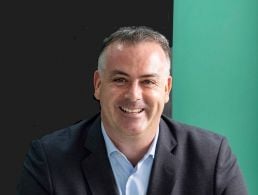With the rise of facial recognition systems, mouse-tracking software and more in the remote work era, we need to ask how far we’re willing to allow HR tech to go.
HR technology has been getting plenty of attention recently. Throughout the pandemic, it has helped recruiters get to grips with virtual hiring and leaders to manage their dispersed teams more effectively. Some believe it can help remove bias from the hiring process and offload some of the manual labour that comes with filtering, organising and scheduling from a human’s to-do list.
But while tech and automation bring more opportunities, they can also raise more issues. With facial recognition technology and workplace surveillance on the rise, we may need to shift our focus away from the question of whether or not our jobs will be safe in the age of robots, and instead ask how safe our data, privacy and time will be in the hands of our employers.
A recent report from the European Parliamentary Research Service claims that we are in an age of the “new surveillance workplace”.
“New technological innovations have increased both the number of monitoring devices available to employers as well as the efficiency of these instruments to extract, process and store personal information,” it says.
“While much of the activity appears as an exciting and brave new world of possibility, workers’ personal experiences of being tracked and monitored must be taken into account. Now, issues are emerging having to do with ownership of data, power dynamics of work-related surveillance, usage of data, human resource practices and workplace pressures in ways that cut across all socioeconomic classes.”
The legal implications of this workplace surveillance aren’t straightforward. According to the report, the Spanish constitution explicitly protects worker privacy, while employers in Ireland can monitor their staff as long as they comply with GDPR. But legal requirements aside, is it the right thing to do?
Workplace surveillance in the new era
Amid the pandemic, employee surveillance has become more popular among bosses who want to know what their staff are doing at all times. For example, PwC says the number of finance firms tracking the work produced by employees has risen from 62pc in 2018 to 77pc in 2020.
In a BBC report last September, the founder of a London-based company spoke about the measures he’d been taking to track worker activity. He used software that takes note of an employee’s hours worked, keystrokes, mouse movements and visited websites. He also looked at screenshots from employees’ devices taken by the software to help inject staff with “some level of accountability”.
‘The answer to the question of whether employees are working is not solved by surveillance’
– RHIANNON STAPLES, HIBOB
His employees were fully aware of the software and the information it gathered, but it is not clear how effective these kinds of methods are. A key element of any happy company, according to a long list of experts, is trust. And Rhiannon Staples, chief marketing officer at HR platform Hibob, says surveillance tactics may be undermining it.
“While surveillance technology is not an unusual practice for employers, the reasons for which companies have started to use it throughout the pandemic have definitely changed,” she says. “What was previously used strictly for security or regulatory compliance purposes has now shifted to productivity monitoring.
“This type of remote monitoring has a place when it comes to specific industries or circumstances. However, if the concern is related to productivity during work from home, surveillance technology is not the answer. It’s prone to misrepresentation and erodes trust between employers and employees.”
Is facial recognition going too far?
While some also argue that technology helps eliminate human biases from hiring processes, the reality may not be so simple. In 2019, the Electronic Privacy Information Center (EPIC) asked the US Federal Trade Commission to investigate HireVue, which developed an AI tool to help companies figure out which workers to hire.
HireVue’s algorithm analysed video interviews to compare applicants on their presentation, from their word choices to their facial movements. The tool produced an ‘employability score’ that ranked the applicants for the convenience of the employer.
The problem is that this algorithm – and others like it – can actually have human biases baked into it. A growing number of AI developers are trying to bring awareness of racial bias in tech to the world, while IBM researcher Shari Trewin told MIT Technology Review how easy it is for an AI-powered hiring process to become ableist.
“The way that AI judges people is with who it thinks they’re similar to – even when it may never have seen anybody similar to them – is a fundamental limitation in terms of fair treatment for people with disabilities,” she said.
In response to EPIC’s complaint, HireVue stopped using its facial recognition technology earlier this year. But the tool is just one among many. Earlier this month, a number of Uber Eats couriers claimed they had been fired because identification software was incapable of recognising their faces.
Clearly, the implications of facial recognition technology don’t stop once you’ve been hired and you might find yourself being watched while you work. For example, Fujitsu has developed a facial recognition system that can detect how focused a person is in online classes or meetings. Powered by AI, it detects small changes in muscle movements in a person’s facial expression that, according to the tech company, correspond with how hard the person is concentrating.
Do you really need to spy on your employees?
Workers’ voices can’t be excluded from the conversation around workplace surveillance. Early last year, UK bank Barclays stopped using analytics software Sapience after employees spoke out about its effects on their health. Once again, the goal was greater productivity; Sapience claimed that its tech could increase productivity levels by up to 20pc in just six months of using it.
It also said it could reduce outsourcing costs by 20pc, but the toll was made clear when a staff member at Barclays told CityAM: “Employees are worried to step away from their desks, have full lunch breaks, take bathroom breaks or even get up for water, as we are not aware of the repercussions this might have on our statistics.”
Staples from Hibob adds that resorting to tracking staff behaviour may be a sign that your leadership skills are up to scratch. “While companies practising surveillance for productivity reasons might believe they’re solving the productivity issue, they’re really missing an opportunity to develop an approach to leadership and management that is focused on outcomes rather than analysis of activity,” she says.
“Analysis of activity can misrepresent the quality of one’s work and their effectiveness, which are the ultimate measures of productivity. Businesses that want to remain competitive in attracting the best talent recognise that trust, autonomy and flexibility are key to attracting and retaining employees.
“Surveillance systems are not a proxy for good leadership. Investing in leadership skills and systems that encourage managers to have a very clear construct in place for managing the conversation about what’s expected of employees, and whether or not they’re achieving those expectations, is a stronger and more impactful strategy.”
Put simply, workplace surveillance is likely not good for business and, more importantly, employee wellbeing. And during a time of crisis, when so many leaders have been emphasising the importance of compassion and empathy, that’s something you probably don’t want to be remembered for.
“The answer to the question of whether employees are working is not solved by surveillance,” Stapes adds. “It’s solved by strong leadership.”




